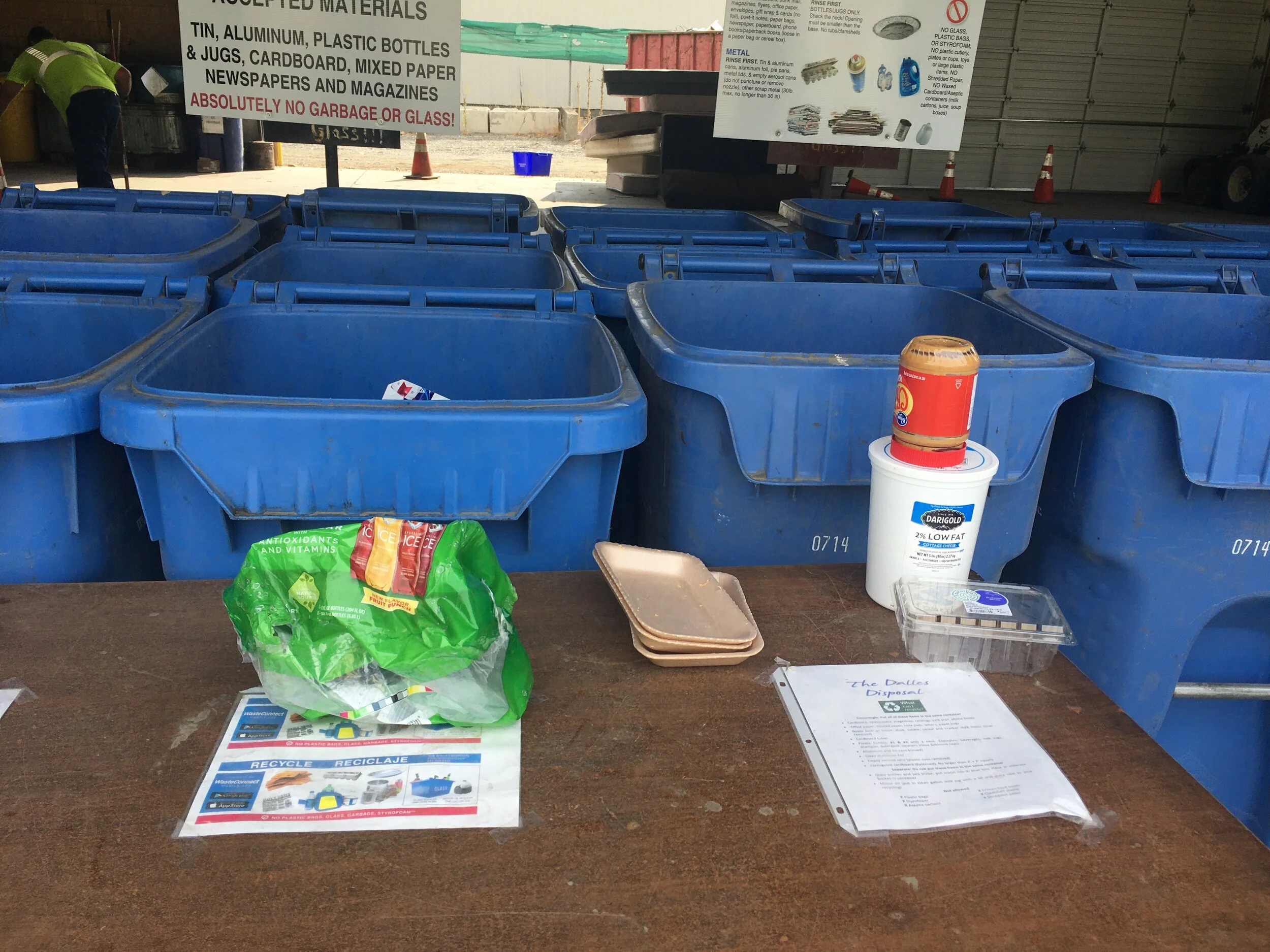What Happens to Your Recyclables?
By Haley Mast
Recycling has always had its struggles, and China’s “National Sword” policy, enacted in January of 2018, has continued to place more limitations on local recycling facilities. The Dalles Disposal Service Center receives between 2,500 to 3,000 pounds of recyclables a day, so where does it all go? Jim Winterbottom is the district manager of Waste Connections. He takes us over the pitfalls of recycling in our community, and how we can work together to better improve it.
Back Story
Due to the deluge of contaminated and soiled recyclables that were overwhelming China’s processing facilities, their purchasing of our recyclables ended in January of 2018. The recycling industry in the US lost one of their biggest profits in the industry due to this new policy. Plastics are now ending up in landfills, incinerators, or littering the environment. The rising cost of hauling away recyclables causes the small profit of material sales unprofitable.
Trash Conveyer within the recycle plant.
The Dalles recycle plant
The Dalles Disposal Service Center has been refining their accepted recyclables since the ban. In August the Material Recovery Facilities (MRF) has reduced the number of items they will accept to be processed and recycled. The MRF duty in recycling is to separate and prepare recyclable materials for marketing to end-user manufactures.
The most common recycled items are considered “commingles.” Some of the common items are soda bottles, laundry soap jugs, tin cans, egg cartons, and magazines. Winterbottom said these items cost the facility about $100 per half ton when brought to a MRF. “Nine to 10 tons of commingles leave our facility about every 3-4 days,” he said.
Cardboard is one of the few items the facility does make a profit. The going rate the MRF typically pays The Dalles recycle center $120 a ton. “Thirteen to 14 tons of cardboard leaves the facility about every other day.”
Winterbottom said that the cleanliness of commingles raises or lowers the cost they have to pay the MRF’s. If items are more contaminated with food residue then the next load brought to the MRF will cost the company more. If the commingle load is cleaner than the following load will cost the facility less. This shift is solely dependent on the recycler’s choice as to if they cleaned their item first before recycling it.
non-recyclables and contaminated recyclables soon to be tossed into the garbage. These few items were pulled off the top of the public recycle disposal bins.
The dependency on the community
Jim Winterbottom holding wrongfully recycled glass.
Upon arrival at The Dalles recycling plant, Winterbottom walked over to the commingle disposal drop off site for the public, instantly he pulled five items off the top of two bins that were not considered recyclables. One of these items was a peanut butter jar that was not even the slightest bit rinsed. That jar, whether found at The Dalles plant or at the MRF, instantly gets tossed into the garbage, where it will make its way to the landfill. This is what Winterbottom calls “wishful recyclers”, throwing a contaminated item straight into the recycle makes one feel like they are doing the right thing when in fact it adds to the commingle cost the facility has to pay, and it ends up in the landfill anyway,” he said. If you are not going to rinse a recyclable out then please help save everyone time, money, and effort by throwing it in the trash because that is where it will end up anyways, he stressed.
Small and large facilities do not have the capability to rinse or clean contaminated materials that have been placed in the recycle bins. “They will all end up at the landfill,” Winterbottom said. “The only difference is I'm throwing it in the garbage and you are not,” he said.
How do we resolve our recycling issues?
There isn't one answer to fix the explosive plastic usage that our culture has embraced. But with community involvement and being conscious when recycling, we can locally fix some of our recycling plant problems. Winterbottom said it would be huge if locals did just two things - wash containers properly, and only recycling an item if you are sure it can be recycled at The Dalles Disposal Service Center.
Winterbottom said globally it all comes down to the packaging manufacturer, we do need a more integrative and sustainable way of packaging goods…
To put it into perspective if the present plastic production trend continues into 2050 we will have around 12 billion metric tons of plastic in our landfills. That weight is 35,000 times the weight of the Empire State Building (Statistic courtesy of Science Advances 2017 Research Article).
CLICK HERE TO SEE A LIST OF ACCEPTED AND NOT ACCEPTED RECYCLABLES IN THE DALLES.
Wasco County Landfill





